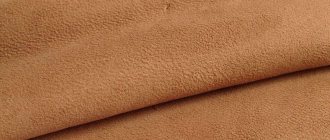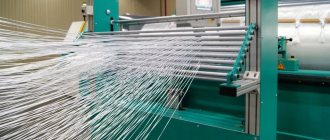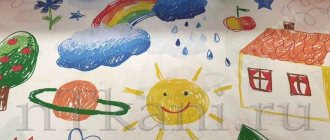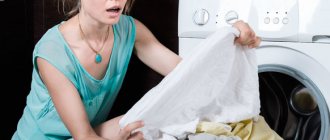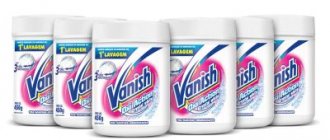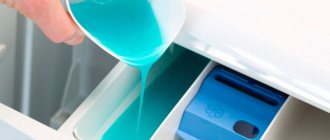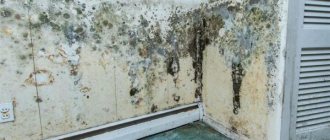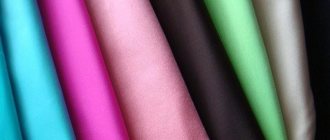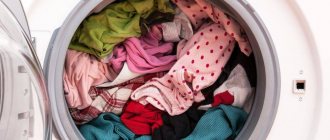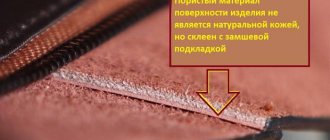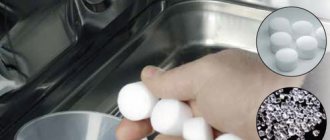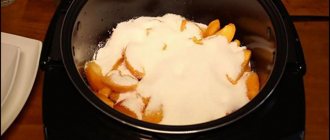Greetings, dear reader! Today I propose to talk about one of the most popular fabrics - viscose. Why did she win the hearts of consumers so much? What kind of “pie” is this and what do you eat it with? Let's figure it out together.
1. History of the creation of viscose; 2. Technological process for the production of viscose; 3. What is viscose?; 4. Types of viscose fabrics; 5. Advantages and disadvantages of viscose fabric; 6. Use of viscose fabric; 7. Care of viscose; 8. Customer reviews.
Is viscose a natural, artificial or synthetic material?
Humanity owes the appearance of viscose fiber to the experimental work of Guiller de Chardonnay, who, as a result of research in 1884, was able to obtain artificial material from natural raw materials. Thanks to the developments of this scientist, waste from wood processing began to be used to create a unique material. Viscose is obtained artificially through the chemical modification of cellulose.
The manufacturing technology of the material and its formula have no analogues. According to the description, it resembles cotton, as it does not electrify and quickly deforms. However, the difference between cotton and viscose is that it is softer to the touch and easily smoothes out to return to its original shape.
The disadvantages of matter are easily compensated for by adding synthetic components made from polymers. Synthetics make the fabric more durable and wear-resistant. The properties of the fabric and its structure make it possible to produce from it any model of light summer clothing, warm clothes for cold weather that can retain heat, like wool, as well as products for decorating the home interior.
This is interesting: Printed fabric - what is it. Types with drawings, photos
Story
Viscose fiber is artificially derived from natural cellulose. Translated from Latin, viscosus means sticky. The first process for producing viscose fibers was described by J. Mercer in the 40s of the 19th century. The beginning of the application of production technology in industry belongs to E. Schweitzer and dates back to 1857. In 1892, the Englishmen Beadle, Cross and Bevin were able to obtain viscose fiber industrially. In France, at the beginning of the 20th century, J. Brandenberger patented the production of cellophane. In 1902, the process for producing viscose (artificial silk) was patented.
In the Soviet Union, the production of viscose began in the late 20s of the twentieth century.
How are viscose threads obtained?
Natural wood sawdust and wood chips are used to produce viscose fiber. This raw material is waste from wood processing enterprises. To create viscose fabric, wood pulp is subjected to processing, which takes place in several stages:
- creating a spinning substrate by steaming the starting material in a solution containing an alkali;
- passing the resulting mass through a spinneret plate with tiny holes into a mold with acid to form viscose threads;
- thread processing;
- drying.
Customer Reviews
The lightness of summer products made from viscose fabric and their ability to allow air to pass through, like linen and cotton clothing, are noted.
The downside is that it creases, although not more than with natural fabrics.
Regarding use in the interior (bedspreads, curtains), the great similarity with silk and attractive appearance are emphasized.
In general, buyers agree that viscose fiber is a worthy alternative to more expensive natural fabrics.
History and production process
In 1664, British physicist Robert Hooke worked on obtaining natural fabric from wood raw materials. There was a lack of technical capabilities to implement this process. Therefore, the idea had to be abandoned.
Material range
In 1855, George Oudemars developed a technology for making viscose by hand. He dipped a thin needle into a sticky mixture of rubber, crushed wood, alcohol and ether. In this way the threads must be formed and mined. It was a long and labor-intensive process that could not be continued. The material was easily flammable, so it was again unviable. Only 30 years later, the French chemist Count Guiller de Chardonnay managed to develop a new technology for the production of viscose material.
Viscose material
He patented his invention and founded a company to produce it. The material shone and was fragile, easily flammable. The scientist continued to improve the fabric production technology. In 1889, new types of threads were introduced. In 1892, British chemists Charles Frederick Cross, Edward John Beaven and Clayton Beadle developed a technology for the production of viscose.
Loom
Viscose manufacturing technology:
- Grind the cellulose and boil it in a container with calcium hydrosulfite salt.
- Remove water. Leave the humidity at 6-8%.
- Remove impurities by heating a sodium hydroxide-lye solution. As a result, alkali cellulose is formed.
- Keep the raw materials until ripe. There will be a decrease in the molecular weight of the original cellulose wood.
- Treat raw materials with carbon disulfide. Add alkali solution and mix. The result is a viscose solution containing 85% water.
- Leave the solution for several days to mature and obtain viscosity.
Traditional material production
- To produce the material, use the wet method. The solution is passed through dies. It is sent to precipitation tanks filled with acid.
- The resulting raw materials are used to produce long threads that are wound onto bobbins.
After the threads are formed, they are wound onto bobbins
This is a traditional production method. But today more modern technological processes already exist. However, many manufacturers have not yet perfected their production.
Modern production
Main production technology
The process of factory production of viscose is a lengthy procedure consisting of several successive stages. And it all starts with the receipt of cellulose at the plant, which has the form of sheets obtained after pre-processing wood chips. The main steps include.
- Preparation and subsequent mercerization of cellulose pulp. This term refers to treatment with a solution of caustic soda followed by rinsing with cold and hot water. This procedure is required to increase the hygroscopicity of the resulting fabric, add shine and subsequent color retention.
- Grinding and pre-ripening. The final point of the previous stage is the production of alkycellulose, which is an alkaline material. It is crushed to obtain a larger surface area. This is required during pre-ripening. It is carried out in special bunkers, where destructuring of molecules occurs under the influence of air.
- Xanthogenation. A chemical procedure during which the resulting composition is treated with carbon disulfide, resulting in the formation of an alkali-soluble compound. When lowered into a weak sodium solution, it is washed out of the future tissue.
- The next stage is to prepare the viscose fabric directly for spinning. This procedure involves mixing viscose from several batches to achieve optimal viscosity, obtaining the desired concentration. Also at this stage, impurities are eliminated and air trapped in the composition in the form of bubbles is removed so that the resulting mass is homogeneous. The threads are also tinted to the desired color.
- Formation. A procedure during which the direct formation of a finished thread occurs through the use of a spinning machine using the technology of pressing through special nozzles and further drawing. This allows you to achieve a material with the desired aggregate properties. During the drawing process, the molecules are ordered along the axis of the fiber, which helps to increase strength.
- Finishing. After formation, the thread is wound onto a special bobbin. But at this stage it is very polluted. It contains mechanical impurities, sulfuric acid, zinc, sodium sulfate. Therefore, processing including washing, bleaching, acidification, desulfurization and oiling is required to improve processing at the weaving stage.
- Drying. The final stage of producing viscose is drying the fiber. At the final stage, the threads are twisted and wound onto bobbins for subsequent sale or weaving.
Cellulose mercerization line
Chemical formula of xanthogenation
After formation, the threads are wound onto bobbins and in this state are sent for drying.
Polynose viscose has increased strength, but requires more effort to produce
This is interesting: Denim denim: description, photo, how to care
Characteristics of viscose. Advantages and disadvantages
It is not for nothing that viscose enjoys “national” love. Let's look at its advantages.
- Viscose materials differ from most others in their unique property - in summer they give a pleasant feeling of coolness, and in winter they warm.
- Viscose is hypoallergenic and suitable for those with sensitive skin—this plus is also important for parents of small children.
- Tactility, softness and impressive drape make viscose materials a favorite of fashionistas.
- Viscose does not accumulate static electricity, which allows it to be part of multi-layered looks in any season.
- Even at the fiber stage, viscose is easily dyed in any shade. Due to the fact that the dye is introduced directly into the fiber, the brightness and intensity of the coloring is maintained for as long as possible, and the fabrics do not fade.
- Viscose fiber is very light, lighter than cotton. Moreover, the hygroscopicity of this fiber is twice as much as the ability of cotton to absorb water!
- When dry, any viscose fabric is highly durable.
This group of fabrics also has disadvantages, which, however, are significantly less than their advantages.
- When wet, the canvas can be brittle, but this still requires sufficient mechanical stress. Nothing bad will happen to the fabric during normal washing.
- Viscose shrinks up to 10%, but if WTO is carried out in accordance with all the requirements for caring for fabrics made of viscose fiber, then the shrinkage will be less.
Pros and cons of viscose fabric
Viscose fabric (what it is, composition, photos we looked at above) has quite a number of positive and negative properties. They influence the choice of the type of fabric for making clothes. Let's list the advantages of viscose.
- The material is hygroscopic. It can absorb liquids up to fifty percent of its mass.
- A canvas made of such material is considered breathable.
- The fabric is antistatic.
- The material is well colored with dyes.
- It has thermoregulating properties (cools during heat and warms during cold).
- Contacts well with the body. Does not cause negative reactions on the skin, is comfortable and pleasant even for the most sensitive person.
Of course, like any material, it has disadvantages.
- Reduced strength when washing items (hand wash or delicate cycle is recommended).
- The fabric wrinkles easily.
- The material stretches well.
- Sometimes the fibers become thinner, i.e. The fabric is not strong enough and wears out easily.
But all these shortcomings can be compensated by adding various components, thus increasing strength, softness and elasticity, reducing wrinkles, giving the required appearance to the fabric (shine or dullness, color).
Other production technologies
Along with the traditional method of making viscose, which has been used for many years, there are alternative methods. Despite their innovativeness and modernity, they cannot yet be considered universal and are not suitable for mass production.
This includes a method for producing polynose viscose. This is a process that results in a change in structure. During manufacturing, cellulose undergoes a lesser degree of depolymerization, which leads to improved properties of the finished material, in particular strength.
For your information! To produce polynose viscose, purer cellulose and chemical reagents are used
Viscose thread is primarily used to make clothing.
Application in light industry
Viscose fabric is an excellent material for sewing workwear. It is well ventilated, and is often used to make work uniforms: medical gowns, aprons, thermal underwear, jackets, uniforms for air and railway transport workers, etc. The lion's share is occupied by sewing sportswear - both summer and winter: suits, T-shirts, leggings, T-shirts.
A significant niche in the use of viscose is occupied by home textiles - tablecloths, cleaning napkins, towels, curtains, tulle, bedspreads. When sewing outerwear, it is used as a lining. In applied needlework, ribbons and embroidery threads are made from it. Viscose fibers that have undergone special modification are used in medicine and for chemical protection.
Characteristics and properties
The characteristics of a material are influenced by its manufacturing technology. Therefore, the material has a different appearance. It can be: glossy and matte, textured and smooth, light and dense material.
Is viscose a synthetic or a natural fabric?
Consumers are interested in the question: is viscose synthetic or natural fabric? To understand this issue, you first need to clarify that people produce non-natural material using synthetics. To produce natural material, natural raw materials are used. For example, from sheep wool or silkworm threads. And to make viscose, wood and special chemical solutions are used.
This may interest you Features of polyviscose: natural material or synthetic
What is viscose and what does it consist of? It is generally accepted that fabric based on natural raw materials is a natural material.
Properties of viscose, stretches or not
The properties of viscose include the following:
- The material is soft and pleasant to the touch. Folds and drapery look beautiful in sewing products
- Hygroscopic - absorbs moisture well and allows air to pass through.
- Dry material has a high degree of strength, while wet 100% viscose has low strength. To increase strength and wear resistance, manufacturers add chemical additives to raw materials.
The disadvantages, as well as the advantages, in the fabric are compensated by various protective additives. Cotton added to viscose makes the fabric dense and increases its service life. To the question “does viscose wrinkle or not?” easy to answer. The material is strong with an oily sheen. Windbreakers and jackets are made from it. Used as lining material.
Many people are interested in: microviscose - what kind of fabric? If polyester is present in viscose, then the fabric does not wrinkle and retains its beautiful appearance. The elasticity of the material is given by the addition of elastane, which allows the fabric to stretch well.
Appearance of viscose
Answers to frequently asked questions
When purchasing a ready-made viscose product or fabric for individual tailoring, questions often arise regarding use: how the purchased item will behave during wear, during and after washing. According to their characteristics, all types of viscose material are similar to each other. Let's look at the most exciting moments regarding this fabric, based on reviews from people who use viscose products.
- What the human liver loves and how to restore it
- Personal hygiene rules that are important for your health
- Model haircuts for boys with photos
Viscose - stretches or not?
Unfortunately, viscose fabric in its pure form will stretch. Due to this deficiency, clothing may lose shape and become deformed. To prevent this from happening and to prevent the buyer from being disappointed, when producing fabric, elastane or lycra is sometimes added to viscose, depending on the intended tailoring of the products. The elastane content in the fabric increases the wear resistance of the item and is not subject to excessive stretching, which is typical for stretch.
How to care for fabric
- Wash only on delicate cycle. Both manual and machine are allowed.
- Use mild detergents, preferably gel-type ones, without phosphates.
- Wash in water at a temperature of no more than 40 degrees.
- Due to the fact that viscose loses its strength properties when wet, twisting and hard pressing are not recommended.
- Dry away from heating devices, preferably horizontally.
- Iron from the wrong side on the “silk” setting, do not use steaming.
What is viscose used for?
Viscose is a surprisingly diverse fabric in its manifestations. Therefore, the scope of its application is extremely wide. Of course, the most obvious direction is sewing dresses, skirts, tops and sets from all kinds of variations of dress viscose and staples. Joggers, tiered dresses or long skirts, comfortable tops - all this will work great from comfortable viscose.
Often, costume variations of fabrics are used to create incredibly stylish products suitable for an office wardrobe. The material is affordable, which means it can be safely used for sewing current, seasonal products.
Nonwoven materials for cleaning and raw materials for light industry are also made from viscose. Bamboo viscose is often used in bedding, and even socks.
Composition and processing methods of viscose
The properties of viscose largely depend on the raw materials used for its production. What is it like? There are four main types of fibers obtained from cellulose.
- The most popular, which is made from hardwood of different species, is modal .
- Bamboo can also act as a raw material for future fabric, and bamboo cellulose is very similar in its properties to natural cotton fiber.
- Siblon is a fiber made from recycled softwood pulp. It is very durable, wrinkles little, and does not shrink, but its production has currently been reduced.
- Tencel is made from eucalyptus wood - a material with excellent antiseptic properties, very durable and environmentally friendly.
The technology for producing viscose also affects what the fabric will be like. For example, during processing, threads of different thicknesses are obtained, from which different materials are made. Light clothing materials are made from thin textile threads, and staple fiber (short, uniform length) can even be used to make viscose yarn. Dense, durable viscose threads are used to produce cord materials.
Important physical and mechanical parameters of the fabric - its dullness or shine, density or lightness, texture or smoothness - also depend on the method of spinning the future fiber. So, the original, pure viscose in its characteristics resembles silk, it shimmers, and this shine is removed by adding matting components.
Types of viscose fabrics
Conventionally, viscose can be divided into three types: staple fiber, cord thread and viscose silk, and this division depends on the production method and the resulting qualities of the viscose fabric. Staple fiber is mainly used for sewing insulated clothing, blankets and carpets. Cord thread is used for high-quality fabric, and viscose silk is used for sewing bedding (pillowcases, sheets, duvet covers). Depending on the raw materials and the processing technology used, the following types of fabrics are distinguished:
- Tencel . This fabric originates from eucalyptus cellulose. Tencel feels silky and soft to the touch. Has a solid structure. It is used to make both casual clothing and bedding.
Appearance of Tencel fabric.
- Modal . Despite the fact that the fabric consists of 100% cellulose, it has all the qualities of cotton, so you can also sew clothes and bed linen from it. Such properties are achieved through weaving.
Appearance of modal fabric.
- Acetate . Acetate is made from cellulose waste. In appearance, this fabric resembles silk, but this is only in appearance. In fact, acetate is quite fragile, does not allow air to pass through well and practically does not absorb moisture. It is used for lining materials.
The appearance of the fabric is acetate.
- Cupra . The production of this material is not simple, it has its own technological features and difficulties, so it is one of the most valuable and high-quality. Cupra has good breathability, thermoregulation and durability, but it is difficult to care for. It makes great evening wear.
Appearance of cupra fabric.
- Siblon . The fabric is made from cellulose from coniferous trees. It is durable, hardly shrinks or wrinkles, is relatively cheap to produce, and is therefore widely used by consumers. It is mainly used for the production of textile fabrics.
Appearance of siblon fabric.
How the fabric is made
Viscose fabric is obtained by processing wood pulp, which is crushed and boiled in alkali under pressure for 24 hours. Next, the raw material is pressed through dies and placed in an acid bath. The final step in making fabric is to spin the fibers into threads and dry them.
Depending on the processing method, viscose fabric can have different densities, which allows the material to be used for sewing clothes for any season.
Is viscose better or worse than other fabrics?
It is difficult to compare viscose with other materials - its properties are unique. At the same time, sewers often ask themselves the question: viscose or synthetics? Of course, you need to look at each specific situation, but for sewing clothes and linen, viscose is a great option. There are many mixed fabrics in which viscose can play a leading or supporting role.
It is clear that for summer dresses, sets, and suits it is difficult to find a fabric better than viscose, which would be just as drapey, light and comfortable to wear. If you are thinking about warmer products for the cool season, it is better to focus not on pure viscose, but on mixed options.
Rules for caring for viscose fabric
In order for a product made of viscose material to serve for a long time and not lose its properties, it is necessary to properly care for it:
- clothes should be washed only on a delicate cycle;
- detergents should be soft and non-aggressive;
- heating the water when washing is no more than forty degrees;
- the fabric should not be wrung out too much, as when wet it loses its strength;
- Clothes should dry in the fresh air, away from heating devices, so as not to overdry the fabric;
- ironing only in the “silk” mode, and the product should be turned inside out;
- Do not expose to prolonged sun exposure.
Now you know how viscose fabric is made, what it is, composition, photo. As you can see, artificial material is used in almost all areas where expensive fabrics, furs, etc. were previously required. Artificial fibers in modern processing are a worthy alternative to natural fabrics!
Previous article: What can a nursing mother eat at 1 month (list)? Next article: How to induce menstruation if late at home in 1 day?
How to choose fabric
Viscose is an unusual material. Its origin is considered natural and synthetic. Recycled wood chips are subject to chemical treatment during fabric production. It makes sense to choose viscose for sewing products. It has hypoallergenic, hygroscopic, breathable, hygienic qualities. The material folds beautifully, drapes easily, and has a reasonable price.
Selection of material for garments
For your information! Viscose differs in one interesting feature and quality from other types of fabrics. When wet, it turns into a dense, hard material. After drying it becomes pleasantly tactile.
Production
What is viscose fabric? The definition can be given as follows: natural fiber obtained artificially. How can these two concepts go together? Yes, very simple! You will understand everything when we tell you what viscose fabric is made from.
The basis of the material is cellulose, a substance found in wood. In principle, this is everything that matter is made of. Thus, answering the question what kind of fabric is viscose, whether it is natural or not, we can answer - completely natural. After all, it is obtained from natural material, and not from oil and gas processing products.
Let's look at the main production steps:
- Raw materials (wood) are cleaned, crushed and pre-treated
- Dissolves and removes excess liquid
- The resulting cellulose mass is pressed through filters and fibers are formed
- Fiber processing - drying, pressing, bleaching, and then dyeing
So, processed viscose - what kind of fabric does it make?
Varieties
Tencel (lyocell)
The cellulose from which this fabric is made is obtained from eucalyptus. The material is silky, very soft, a fiber whose characteristics are closest to cotton.
Pros:
- increased strength;
- excellent hygroscopicity;
- breathability.
Minuses:
- low resistance to deformation.
It is used in the production of clothing, bed linen, and home textiles.
Modal
Consists of 100% wood cellulose, has all the properties of cotton, but in an improved version.
Positive properties of modal:
- one and a half times more hygroscopic than cotton fabric;
- environmental friendliness;
- high wear resistance;
- increased strength.
Modal is usually used in combination with cotton fibers for clothing and bed linen.
Acetate
Read about: acetate fabric: what is it, not synthetic, not natural, but what kind
For production, it is not cellulose in its pure form that is used, but its waste - cellulose acetate. Thin material, slightly shiny, resembles silk in appearance.
Advantages:
- low creasing;
- resistance to deformation;
- dries quickly.
Flaws:
- does not absorb moisture well;
- when exposed to acetone, the fibers dissolve;
- not resistant to high temperatures (melting point is close to 200 degrees).
Acetate silk is often used as lining fabric.
Cupra
It is made from cellulose, consisting of cotton, which is dissolved in a copper-ammonium saline solution. The material is close to silk and is considered the highest quality and most expensive type of viscose.
Advantages:
- ability to thermoregulate;
- excellent breathability;
- strength.
Flaws:
- require special delicate care;
- not environmentally friendly and expensive production process.
Cupra fabrics are used mainly for sewing evening wear. Products made from viscose require careful care, then the product will last a long time and will not lose its positive qualities.
Characteristic features of viscose. What does it consist of?
Viscose fabric, as mentioned above, is reduced cellulose. That is why its properties are very similar to natural fibers. If you do not add impurities, then in its pure form the fabric is very similar to cotton - just as soft, breathable and hygroscopic. If not properly cared for, items made from it may shrink.
In most cases, viscose resembles silk in appearance. Its texture is translucent and the fabric itself is shiny. To eliminate shine and achieve a matte effect, special substances are added to the fibers during the manufacturing process of viscose.
The properties of viscose are very similar to cotton. One of the advantages is the absence of static electricity, however, it wrinkles easily, can be deformed, and can deteriorate under the influence of atmospheric factors. But still, compared to natural material, viscose is easier to smooth out and wrinkles much less.
All fabric deficiencies are compensated for by various protective additives. For example, if elastane is added during production, the fabric acquires stretching properties and becomes stronger.
The structure of viscose is such that in the hot summer, clothes made from it are very cozy and comfortable. It is quite breathable and dries quickly. Brushed fabric retains heat well and absorbs moisture (does not allow the body to sweat).
But light clothing is not made from polyester (a competing artificial material), since its structure is such that air does not pass through it well. Most often it is used for sewing outerwear (windbreakers, jackets) and household textiles; it is also added to yarn for knitting, which increases the quality level of the finished threads.
Advantages and disadvantages of the material
Viscose is a natural synthetic obtained from wood. Positive qualities of the fabric:
- does not cause allergies;
- pleasant to the body;
- allows air to pass through, allowing the skin to breathe;
- elastic, stretches well, except for 100% viscose;
- durable;
- Resistant to stains.
Disadvantages include difficulties in caring for the products. When washed incorrectly, the fabric becomes deformed and the surface becomes covered with pellets. Frequent washing leads to fading and wear of the material.
When wet, the fabric becomes stiff. In this form it is easy to damage. After washing, things shrink a lot. Using the wrong detergent will cause the fabric to fade.
Cutting and sewing from viscose fabric is not easy. The cuts crumble, and the material itself is mobile, shifting when cutting. When working with the material, it is secured with pins. It is sewn on a machine after preliminary stitching by hand.
When cutting out parts, wide allowances should be made, and the cuts should then be processed with an overlocker. You need to sew things a size larger, as the product shrinks a lot after washing.
View this post on Instagram
Publication from the Online Fabric Store (@drapery_market)
What is viscose?
Very often people ask: “Is viscose a natural fabric or synthetic?” It's time to answer this question. But first, let me clarify that by artificial fiber we mean fiber that was created by man from artificial raw materials, but natural fiber is based on raw materials created by nature, for example, sheep wool or silkworm threads. As you already understood from the history of the origin of viscose, it is obtained from a natural product - wood, but using special chemical solutions, which is why there is a stable expression: “Viscose is an artificial product, but created on the basis of natural raw materials.”
Viscose appearance.
As practice shows, viscose may not consist of 100% wood cellulose, but may have various additives, both synthetic and natural. Therefore, the material directly depends on the composition. For example:
- 100% viscose . It is soft and delicate to the touch, but not durable;
- Viscose with elastane . This composition makes the fabric elastic;
- Viscose with polyester . Makes the fabric very durable;
- Viscose with cotton . This combination adds strength to the fabric, just like with polyester, but does not reduce its environmental qualities.
Photo: what viscose fabric looks like
To buy quality fabric, you need to know what it looks like. The selection of photographs below will help you understand the differences between different types of viscose based on external characteristics. Products based on this universal fabric look high-quality, elegant, and beautiful. With this knowledge, you can easily distinguish viscose from other fabrics on your own.
